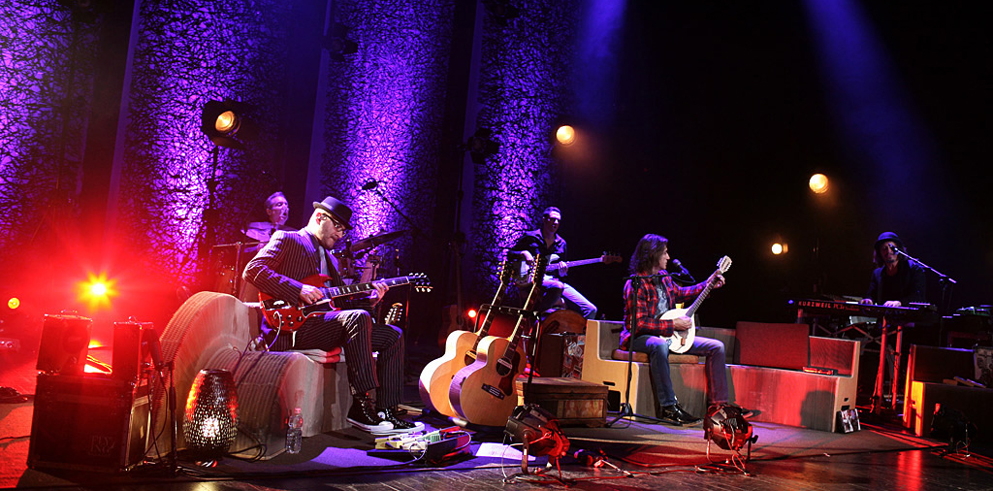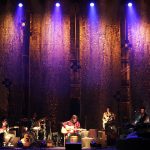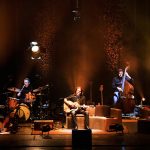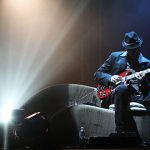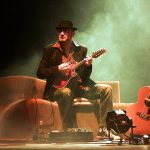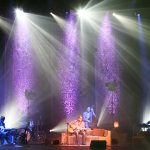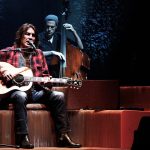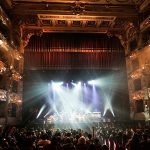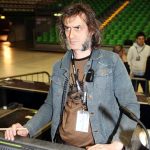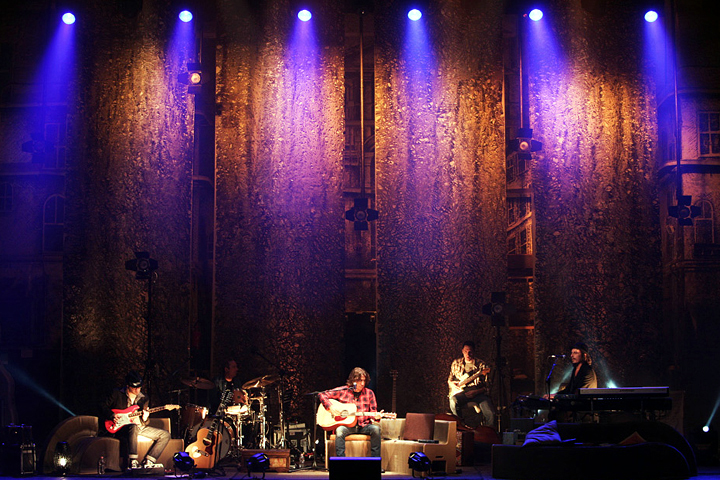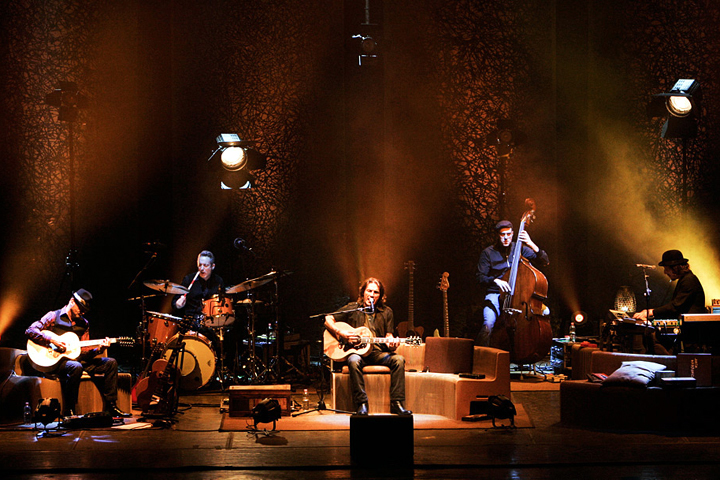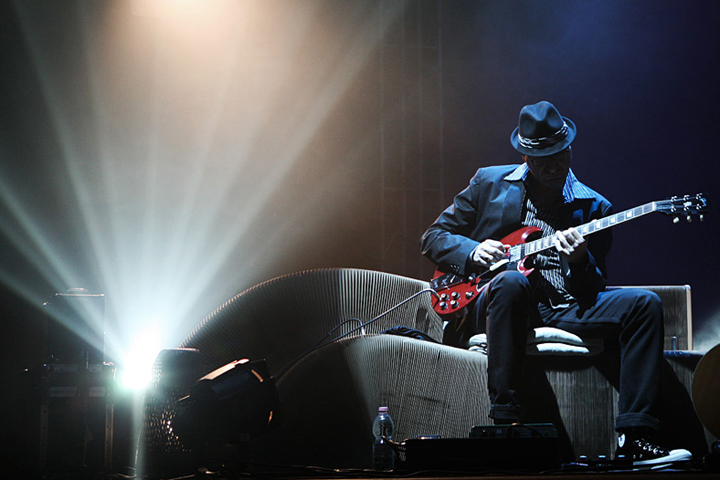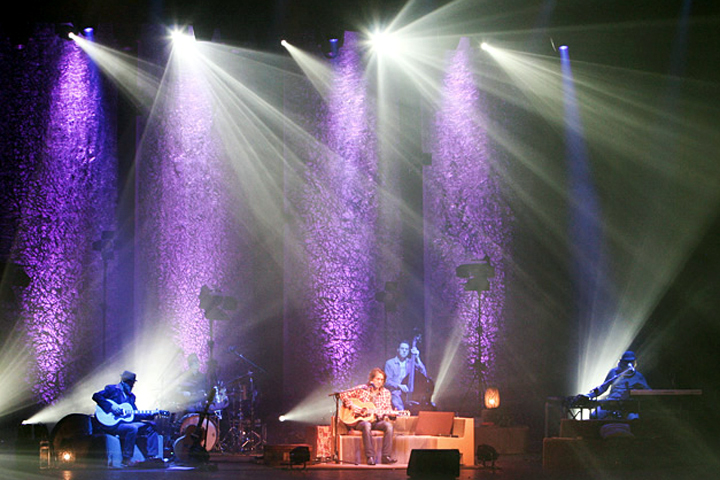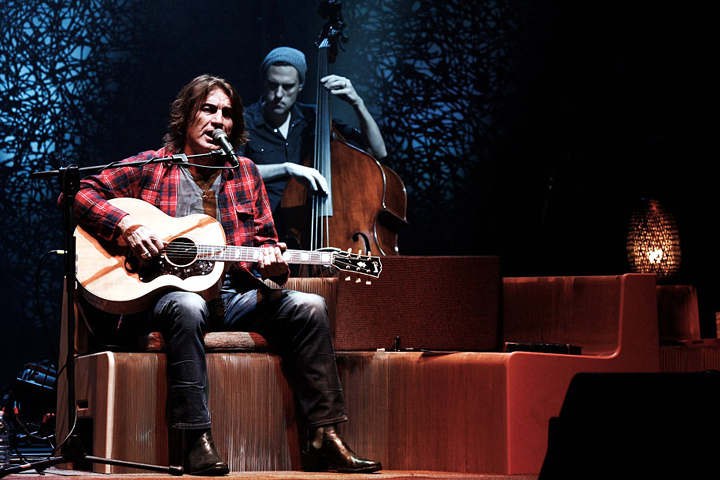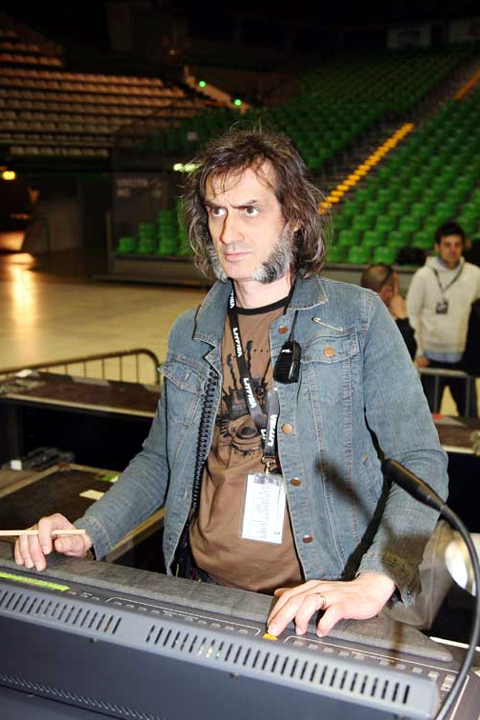2010 was a record year for Ligabue on all fronts: a multi-platinum disk – “Arrivederci Mostro” (Goodbye Monster), in celebration of the artist’s 20-year career anniversary, was the year’s best selling cd with 35 weeks on the charts; a tour with 28 sold-out dates in stadiums and sports arenas with over 640,000 tickets sold, and which was elected by spectators as “Best Show 2010” by the trade magazine Sound & Lite.
On the heels of this extraordinary success, a gift box came out in December featuring an acoustic version of “Arrivederci Mostro”. Due to constant demand by fans to see Ligabue perform live, his production unit decided to organise a theatrical tour, which was once more completely sold out.
Luciano Ligabue’s 2011 theatrical tour “Quasi Acustico” (Almost Acoustic) had the Coreggio artist performing in the leading theatres in Italy’s main cities. It was the artist’s choice that each date be played in a different location, even when in the same city. For example, in Milan, the 100% Italian “Liga” took centre stage in three different theatres: the Arcimboldi Theatre (tour kickoff), the Dal Verme Theatre and the Nazionale Theatre.
This tour-de-force needed intense scheduling and great flexibility at all tour organisation levels, from transporting materials to stage setting, adapting audio, video and light to the different locations.
We talked about it with Jo Campana, Ligabue’s Lighting and Set Designer, and one of the minds behind his award-winning shows.
What was special about this theatre tournée from a lighting point of view?
This tour was typically on the move, all round Italy, changing locations all the time: an ongoing back-to-back. Lighting design had to meet certain basic characteristics, above all be rapid and flexible to create. What with transport, mounting, dismantling, adapting to the various locations – see electricity supply, proscenium size, grid height, stage depth etc… we just about never stopped!
Can you describe the lighting and set design for us ?
I’ve always been convinced – except for a few, specific situations – that truss design is not so fundamental for a successful show; but I do feel that careful choice and positioning of lighting is really important. For this tour, I set the stage with three straight, black trusses (back, centre and front) and four black contra sheets (editor’s note: synthetic worked mesh), with a matt white diffusion sheet. I personally went looking for set items like ecru mats, small sofas and worked backdrops, creating a simple, basic, yet elegant, intimate stage atmosphere.
Compared to other Ligabue tours, this was a fairly linear set and lighting matching the tour’s intimate, “acoustic” features perfectly and, above all, the flexibility needed due to dates.
Compared to stadium and sports arena dates, there was no video and led this time. Can you explain why?
In stadiums I built all the lighting around the huge MI-trix led structure: I had to manage 400 sq m of led, an enormous, really bright surface as the core of the entire setting, and which really conditioned use of other light sources. Even though – I must add – the Clay Paky Alpha 700s and Alpha 1500s were really precious where many other lights would have been completely lost!
In the arenas I tried, as much as I could, to reproduce the same concept, even though it was not always easy to “stuff” everything into smaller environments.
Let’s move on to these theatre “appointments” …
After a VISUAL overdose in stadiums and arenas, I suggested going in a completely opposite direction for this theatre part to Luciano: no video projector, no led technology, attention focussed on the concert’s music and emotions, favoured by a typically theatre context. I must say that both Luciano, with whom I always have a constant, ongoing exchange, and management, gave me carte blanche.
Having worked for this great artist for a couple of years now, I know what he does and does not like; I interpret this freedom of action I’m given as a sign that he trusts in me and hope to deserve it each time.
What lights did you effectively use?
I used Clay Paky Alpha Profile 1500s almost exclusively for their specific function, that is as shapers. In detail, I used a front and back light for each of the five musicians on stage. Then the Clay Paky Alpha Spot HPE 700s, with 9 on the ground, mainly for “effects” (gobo , prisms , iris etc…). Then other spotlights, all used “discretely”. In the theatre, communicating an emotion is much more important than attracting attention.
Is there any clearly recognisable element of your style, your way of working in this show?
I always like adding lots of value to the dynamic thrust of an execution, dosing UPs and DOWNs and here you can play around with this aspect more than elsewhere; even though my taste in music and professional curriculum say the opposite, I assure you I enjoy working with dimmers at 10%, with colour temperature and extra-fine movements.
What do you think about Clay Paky lighting?
Three things most of all: efficiency, reliability, assistance. These three include all the others; when you’ve got them, you don’t need anything else. And Clay Paky satisfies them perfectly.
BIO: Jò Campana is one of the most appreciated lighting and set designers on the international scene. His main references, besides Ligabue, include: Litfiba, Francesco Renga, Piero Pelù, Sting, Russel Crowe, Negrita. He has worked with lots of important international stars: Vasco Rossi, Crosby, Stills, Nash & Young, Ringo Starr, Venditti, PFM, Gino Paoli, Salomon Burke, Eros Ramazzotti, Miriam Makeba, Barry White, Laura Pausini, Pino Daniele, Patty Smith, Alice in Chains and many more.
